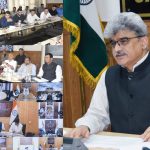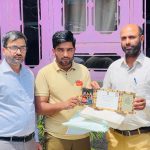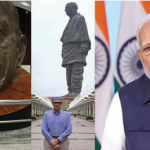World Hemophilia Day 2025 underscores a transformative and long-overdue theme: “Access for All: Women and Girls Bleed Too.” For decades, the narrative around hemophilia has predominantly centered on male patients, overshadowing the struggles of women and girls living with this inherited bleeding disorder. This year, the spotlight finally shifts to a demographic that has long endured in silence, often misdiagnosed or left untreated.
World Hemophilia Day is an awareness day for HEMOPHILIA and other bleeding disorders. It was started in 1989 april 17, and this day was chosen in honor of Frank Schnabel’s birthday the founder of world federation of haemophilia.
Hemophilia is a mostly inherited genetic disorder that impairs the body’s ability to make blood clots, a process needed to stop bleeding. In India about 1300 hemophilia are born every year and currently there are about 50000 patients with severe disease.
Hemophilia is sometimes known as ‘the Royal disease ‘ because QUEEN VICTORIA passed the mutation for Hemophilia B to her son LEOPOLD and two daughters to various Royals across the continent including the Royal families of Spain, Germany and Russia. Hemophilia is X- linked recessive disorder.
While it has traditionally been considered a “male disease,” due to its X-linked inheritance, women—especially carriers—often experience symptoms such as heavy menstrual bleeding, postpartum hemorrhage, and joint bleeds. Yet, societal stigmas, lack of awareness, and systemic barriers have relegated their voices to the periphery.
There are two main types of Hemophilia; Hemophilia A and Hemophilia B.
Hemophilia A occurs due to deficiency of clotting factor VIII and Hemophilia B occurs due to deficiency of clotting factor IX. Hemophilia A affects 1 in 5000 – 10000 males at birth and Hemophilia B affects 1 in 40000 males at birth.
Signs and Symptoms
Characteristic symptoms vary with the severity of disease. In general symptoms are the internal or external bleeding episodes which are called bleeds. People with more severe hemophilia suffer more severe and more frequent bleeds.In both, haemophilia A and B there is spontaneous bleeding but a normal bleeding time, normal prothrombin time, normal thrombin time but prolonged thromboplastin time.
Children with mild to moderate hemophilia may not have signs and symptoms until they undergo circumcision or any other type of trauma. These may have large bruises or hematomas from frequent bumps and falls as they learn to walk. Bleeding into weight or stress bearing joints (HAEMARTHROSES) is a characteristic feature of hemophilia A.
Commonly affected joints are knees, ankles, hips, and elbows. Haemarthroses are major cause of incapacitation in hemophilia. Intramuscular hematomas are particularly common in muscles of calf, thigh, forearm and buttocks. They can compress vital structures like arteries, peripherial nerves and cause pressure necrosis of adjacent tissues. Intracranial hemorrhage can occur following trivial trauma and is a common cause of death in Hemophilia.
This year’s theme compels us to confront the injustices faced by women and girls with hemophilia. It calls for equitable healthcare policies, gender-sensitive diagnostic protocols, and increased investment in research to understand their unique challenges. Advocacy groups, healthcare institutions, and governments must collaborate to create a world where no woman or girl feels unseen or unheard because of her condition.
Bringing true change requires dismantling taboos surrounding menstrual health, which further complicates the plight of women with bleeding disorders. Educational campaigns in schools and communities can help foster understanding, while digital platforms can amplify stories of resilience, inspiring a movement of solidarity.
This World Hemophilia Day, let us break the silence surrounding bleeding disorders in both women and men especially women and advocate for inclusive healthcare system. As a society we can ensure that bleeding disorders are no longer a barrier to leading fulfilling lives.
Salute to all the brave souls who fight this disorder silently.
(The Author is I/C at HOD department of transfusion medicine and I/C Media Cell, GMC Baramulla. Feedback: [email protected])










